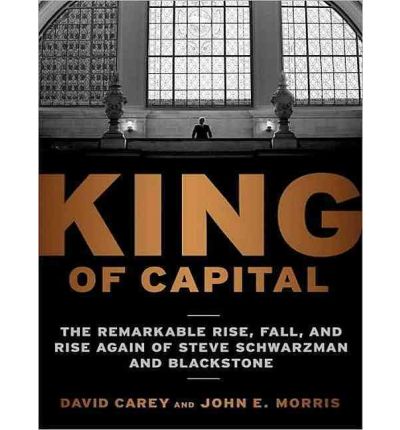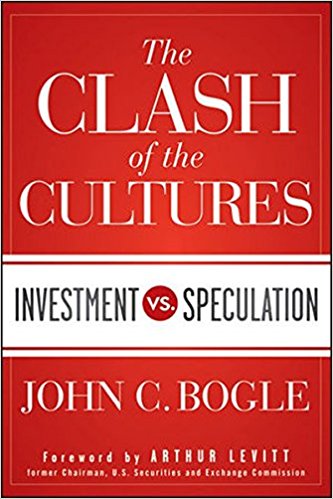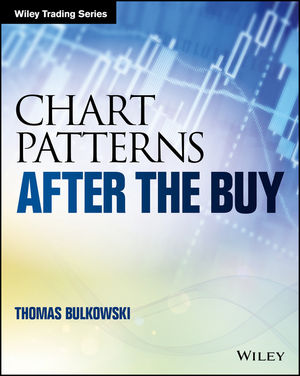Interview with Al Brooks, price Action day trader and the author of 'Trading Price Action Reversals'
1. Brooks is a price action trader with 27+ years of experience.
2. He is an active day trader, trading off the 5 minute chart. He trades the entire day.
3. He has a purely technical approach, relying totally on price action with just a few moving averages.
4. His approach is entirely rules-based; he not use any discretion and does not consider relying on intuition.
5. He states his setups have worked for decades and continue to work.
Brooks' analysis relies on measuring movements (i.e. retracements), gauging the strength of trends, and analyzing candlesticks.
Brooks has authored a number of books on trading, for example: Trading Price Action Reversals. Other books in the series include Trading Price Action Trends and Trading Price Action Trading Ranges.
============
Trading Price Action Reversals by Al Brooks
This is detailed guide to profiting from trend reversals using the technical analysis of price action.
The key to being a successful trader is finding a system that works and sticking with it. Author Al Brooks has done just that. By simplifying his trading system and trading only 5-minute price charts he's found a way to capture profits regardless of market direction or economic climate. His first book, Reading Price Charts Bar by Bar, offered an informative examination of his system, but it didn't allow him to get into the real nuts and bolts of the approach. Now, with this new series of books, Brooks takes you step by step through the entire process.

By breaking down his trading system into its simplest pieces: institutional piggybacking or trend trading, trading ranges, and transitions or reversals (the focus of this book), this three book series offers access to Brooks' successful methodology. Trading Price Action Reversals reveals the various types of reversals found in today's markets and then takes the time to discuss the specific characteristics of these reversals, so that you can use them in your everyday trading endeavors. While price action analysis works on all time frames, there are different techniques that you can use in trading intraday, daily, weekly and monthly charts. This, among many other issues, is also addressed throughout these pages.
- Offers insights on how to handle volatility and sharp reversals
- Covers the concept of using options when trading certain charts
- Examines how to deal with the emotions that come along with trading
Other books in the series include Trading Price Action Trends and Trading Price Action Trading Ranges
If you're looking to make the most of your time in today's markets the trading insights found in Trading Price Action Reversals will help you achieve this goal.
King of Capital: The Remarkable Rise, Fall, and Rise Again of Steve Schwarzman and Blackstone

The story of Steve Schwarzman, Blackstone, and a financial revolution, King of Capital is the greatest untold success story on Wall Street
In King of Capital, David Carey and John Morris show how Blackstone (and other private equity firms) transformed themselves from gamblers, hostile-takeover artists, and ‘barbarians at the gate’ into disciplined, risk-conscious investors while the financial establishment—banks and investment bankers such as Citigroup, Bear Stearns, Lehman, UBS, Goldman Sachs, Merrill Lynch, Morgan Stanley—were recklessly assuming risks, leveraging up to astronomical levels and driving the economy to the brink of disaster. Now, not only have Blackstone and a small coterie of competitors wrested control of corporations around the globe, but they have emerged as a major force on Wall Street, challenging the likes of Goldman Sachs and Morgan Stanley for dominance.
Insightful and hard-hitting, filled with never-before-revealed details about the workings of a heretofore secretive company that was the personal fiefdom of Schwarzman and Peter Peterson, King of Capital shows how Blackstone and private equity will drive the economy and provide a model for how financing will work in the years to come.
The Clash of the Cultures: Investment vs. Speculation by John C.Bogle

Whether you are new to investing or a veteran, this should be a "must read." Indeed, the take-aways are very simple: If you want to succeed in investing, invest in index funds, and hold them long-term. Bogle eschews specialty investing (funds or equities other than broad market index funds), and he eschews speculation even more.
So, in theory, one could take a pass on reading the book and walk away with this advice (which, actually, has been around forever)for free. But that's not the purpose of the book. What the book does is explain, in incredibly persuasive detail, WHY Bogle believes what he does, and why his approach makes sense. Unless you understand the realities of why his approach is preferable, then it is unlikely you will seriously consider his advice.
Indeed, the book does have some shortfalls. Probably the most egregious shortfall is one that is common in virtually every "how to" or "self-improvement" book: failure to kick the readers in the butt and place some of the blame for their problems on themselves. Have you ever read a psychology "self-improvement" book that told the readers they were screwed up and that the problems they had were their own fault? Of course not. You don't want to get your readers angry, even though this is what they really need to hear. In "Clash of Cultures," Bogle NEVER blames individual investors for their problems (i.e., stock market losses). He blames everyone else possible: Congress, the judiciary, public accountants, the press, security analysts, corporate directors, fund managers, and so on. If you operate under the assumption that your problems are everyone else's fault, then you end up in "victim mode," and you wait around for the other people to decide to become honest and nice, so that your life can change. It ain't gonna happen. If you want to solve your problems, you have to take action yourself, and that involves placing the blame squarely where it belongs - on yourself. As the old saying goes, "When you point the finger of blame at someone else, there are three other fingers pointed right back at you." In other words, one shortcoming of this book is Bogle's reticence to make it clear that investors are responsible for themselves. More specifically, they can't expect to succeed unless and until they educate themselves. Handing money over to other people to manage for you, and then sitting back "fat, dumb and lazy" hoping the other people will do the right thing with your money and have your best interests at heart, is a prescription for disaster.
Another shortcoming of the book is that, given Bogle's 61 years in the mutual fund industry, he has a fondness for it over other investment vehicles, such as ETFs. He doesn't bash ETFs. He simply points out the fact that people who own mutual funds tend to hold them for long periods of time, while people who own the same basket of stocks in ETFs tend to buy and sell on a regular basis. This isn't a slam against ETFs. It is a slam against the people who own the ETFs. In other words, there is no requirement that, if you purchase an ETF, you have to sell it quickly. Bogle does admit (but glosses over this fact very quickly in only a couple of phrases in a couple of sentences in the book as quickly as he can) that ETFs can be less expensive than mutual funds in terms of fees. As such, logic seems to dictate that, if you want to purchase a broad market fund and are willing to hold it for a long time, then an ETF makes much more sense than a mutual fund, simply because the ETF will have lower fees in the long run. Again, though, Bogle doesn't come right out and emphasize this.
Other than these two shortcomings (letting individual investors off the hook and not more actively publicizing the lower costs of ETFs), this book is monumental. If you currently invest with a belief that you are smart enough to "beat the market" long-term and/or someone who prefers speculation (in and out buying and selling) to investment (buy and hold), reading this book might actually change your mind - and make you more money in the long run.
Technical Analysis: The Complete Resource for Financial Market Technicians : 2nd Edition

Already the field's most comprehensive, reliable, and objective guidebook, Technical Analysis: The Complete Resource for Financial Market Technicians, Second Edition has been thoroughly updated to reflect the field's latest advances. Selected by the Market Technicians Association as the official companion to its prestigious Chartered Market Technician (CMT) program, this book systematically explains the theory of technical analysis, presenting academic evidence both for and against it. Using hundreds of fully updated illustrations, the authors explain the analysis of both markets and individual issues, and present complete investment systems and portfolio management plans. They present authoritative, up-to-date coverage of tested sentiment, momentum indicators, seasonal affects, flow of funds, testing systems, risk mitigation strategies, and many other topics. This edition thoroughly covers the latest advances in pattern recognition, market analysis, and systems management. The authors introduce new confidence tests; cover increasingly popular methods such as Kagi, Renko, Kase, Ichimoku, Clouds, and DeMark indicators; present innovations in exit stops, portfolio selection, and testing; and discuss the implications of behavioral bias for technical analysis. They also reassess old formulas and methods, such as intermarket relationships, identifying pitfalls that emerged during the recent market decline. For traders, researchers, and serious investors alike, this is the definitive book on technical analysis.
Forum on trading, automated trading systems and testing trading strategies
Something Interesting to Read March 2017
Sergey Golubev, 2017.02.27 10:50
MQL5 programming language: Advanced use of the trading platform MetaTrader 5: Creating trading robots and indicators
by Timur Mashnin
Development of indicators and advisors using the MQL5 programming language for the MetaTrader 5.


Chart Patterns: After the Buy : Thomas N.Bulkowski

Chart Patterns: After the Buy goes beyond simple chart pattern identification to show what comes next. Author and stock trader Thomas Bulkowski is one of the industry's most respected authorities in technical analysis; for this book, he examined over 43,000 chart patterns to discover what happens after you buy the stock. His findings are detailed here, to help you select better buy signals, avoid disaster, and make more money.
Bulkowski analyzed thousands of trades to identify common paths a stock takes after the breakout from a chart pattern. By combining those paths, he discovered the typical routes a stock takes, which he calls configurations. Match your chart to one of those configurations and you will know, before you buy, how your trade will likely perform. Now you can avoid potentially disastrous trades to focus on the big winners.
Each chapter illustrates the behavior of a specific pattern. Identification guidelines help even beginners recognize common patterns, and expert analysis sheds light on the period of the stock's behavior that actually affects your investment. You'll discover ideal buy and sell setups, how to set price targets, and more, with almost 370 charts and illustrations to guide you each step of the way. Coverage includes the most common and popular patterns, but also the lesser-known ones like bad earnings surprises, price mirrors, price mountains, and straight-line runs. Whether you're new to chart patterns or an experienced professional, this book provides the insight you need to select better trades.
- Identify chart patterns
- Select better buy signals
- Predict future behavior
- Learn the best stop locations
Knowing the pattern is one thing, but knowing how often a stop will trigger and how often you can expect a stock to reach its target price is another matter entirely—and it impacts your trade performance immensely. Chart Patterns: After the Buy is the essential reference guide to using chart patterns effectively throughout the entire life of the trade.

The Ultimate Algorithmic Trading System Toolbox is the complete package savvy investors have been looking for. An integration of explanation and tutorial, this guide takes you from utter novice to out-the-door trading solution as you learn the tools and techniques of the trade. You'll explore the broad spectrum of today's technological offerings, and use several to develop trading ideas using the provided source code and the author's own library, and get practical advice on popular software packages including TradeStation, TradersStudio, MultiCharts, Excel, and more. You'll stop making repetitive mistakes as you learn to recognize which paths you should not go down, and you'll discover that you don't need to be a programmer to take advantage of the latest technology. The companion website provides up-to-date TradeStation code, Excel spreadsheets, and instructional video, and gives you access to the author himself to help you interpret and implement the included algorithms.
Algorithmic system trading isn't really all that new, but the technology that lets you program, evaluate, and implement trading ideas is rapidly evolving. This book helps you take advantage of these new capabilities to develop the trading solution you've been looking for.
- Exploit trading technology without a computer science degree
- Evaluate different trading systems' strengths and weaknesses
- Stop making the same trading mistakes over and over again
- Develop a complete trading solution using provided source code and libraries
New technology has enabled the average trader to easily implement their ideas at very low cost, breathing new life into systems that were once not viable. If you're ready to take advantage of the new trading environment but don't know where to start, The Ultimate Algorithmic Trading System Toolbox will help you get on board quickly and easily.
Following the Trend: Diversified Managed Futures Trading

During bull and bear markets, there is a group of hedge funds and professional traders which have been consistently outperforming traditional investment strategies for the past 30 odd years. They have shown remarkable uncorrelated performance and in the great bear market of 2008 they had record gains. These traders are highly secretive about their proprietary trading algorithms and often employ top PhDs in their research teams. Yet, it is possible to replicate their trading performance with relatively simplistic models. These traders are trend following cross asset futures managers, also known as CTAs. Many books are written about them but none explain their strategies in such detail as to enable the reader to emulate their success and create their own trend following trading business, until now.
Following the Trend explains why most hopefuls fail by focusing on the wrong things, such as buy and sell rules, and teaches the truly important parts of trend following. Trading everything from the Nasdaq index and T-bills to currency crosses, platinum and live hogs, there are large gains to be made regardless of the state of the economy or stock markets. By analysing year by year trend following performance and attribution the reader will be able to build a deep understanding of what it is like to trade futures in large scale and where the real problems and opportunities lay.
Written by experienced hedge fund manager Andreas Clenow, this book provides a comprehensive insight into the strategies behind the booming trend following futures industry from the perspective of a market participant. The strategies behind the success of this industry are explained in great detail, including complete trading rules and instructions for how to replicate the performance of successful hedge funds. You are in for a potentially highly profitable roller coaster ride with this hard and honest look at the positive as well as the negative sides of trend following.
Candlestick and Pivot Point Trading Triggers + Website: Setups for Stock, Forex, and Futures Markets

Candlestick and Pivot Point Trading Triggers +Website makes Pivot Point analysis relevant for today's market, with up-to-date data and new techniques that reflect the current trading environment. Tried-and-true tactics are modernized with new tools and approaches, and novel methodologies are introduced to help you make smarter trades while minimizing risk. Directional options strategies draw on analysis from Thinkorswim, TradeStation and Genesis Software, and are integrated with PPS Indicator and Persons Pivots. Quarterly pivots are introduced for long-term trading opportunities and option strategists, and leveraged and inverse-leveraged ETFs are brought into the detailed discussion on trading vehicles. The author's own proprietary setups have been updated to align with the new trading realities, and the new chapter on volume analysis covers the techniques used in his book Mastering the Stock Market. Combined with the tools and resources featured on the companion website, this book gives you the tools and techniques you need to boost your portfolio's performance.
Technical analysis offers more profit opportunities than ever before, but the tools of the trade have changed. This book brings you up to date with the latest, so you can start getting even more out of your trades.
- Utilize leveraged and inverse-leveraged ETFs
- Integrate directional options strategies
- Apply new techniques for volume analysis
- Implement quarterly pivots for longer-term opportunities
The 2006 publications of this book's first edition brought pivot point and candlestick charting into the limelight. The market has undergone massive changes in the past ten years, and many of the most effective techniques have been adjusted and integrated with new tools to become even more effective in today's market. This new second edition of Candlestick and Pivot Point Trading Triggers +Website brings clarity to the current market, and strength to your investment strategy.
- Free trading apps
- Over 8,000 signals for copying
- Economic news for exploring financial markets
You agree to website policy and terms of use
This is the thread about books related for stocks, forex, financial market and economics. Please make a post about books with possible cover image, short description and official link to buy (amazon for example).
Posts without books' presentation, without official link to buy and with refferal links will be deleted.Posts with links to unofficial resellers will be deleted